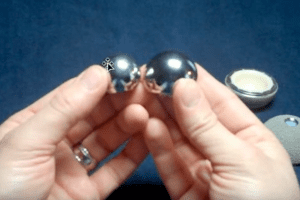
Metal-On-Metal Hip Devices Can Lead to Soft Tissue Damage. Designed to be more durable and longer lasting than traditional hip implants, metal-on-metal hip devices are failing at unexpected rates. Now, federal regulators say that metal-on-metal hip device implants can lead to pain, soft tissue damage, and metal shedding where the device components meet, for instance where […]

Metal-On-Metal Hip Devices Can Lead to Soft Tissue Damage. Designed to be more durable and longer lasting than traditional hip implants, metal-on-metal hip devices are failing at unexpected rates.
Now, federal regulators say that metal-on-metal hip device implants can lead to pain, soft tissue damage, and metal shedding where the device components meet, for instance where the ball and cup meet, said FoxNews. The shedding can take place when the device’s socket is use, such as when the patient is walking or running.
This defect can lead to the need for revision surgery to remove the device and re-implant a different device, a much more complex and dangerous procedure.
Although metal-on-metal implant devices were meant to last longer than traditional implants constructed with plastic or ceramic, the new devices are being associated with adverse event reports; some have been involved in recalls, said FoxNews.
Now, the agency is advising surgeons to review the risk-benefit profile of the devices for their patients and to ensure that those benefits outweigh the benefits of alternative systems, noted FoxNews.
The landmark move made by the U.S. Food & Drug Administration (FDA) updates existing agency safety information and recommendations and reflects the regulator’s revised assessment of the hip devices based on a review of published studies as well as findings from its Orthopedic and Rehabilitation Advisory Panel, said Medscape.
Metal-on-metal hip devices prompted a massive, expanding fiasco of serious adverse reaction reports, global recalls, and regulatory and medical probes. Some experts say that European and American regulators actually ensured patients were not advised of the problematic devices’ risks, said Medscape.
Research has linked metal-on-metal hip implant devices to a broad array of adverse events such as tissue necrosis, implant site pain that can spread to the groin and back, inflammation, swelling, metal poisoning, high failure rates, osteolysis (bone loss), and fluid collection/solid mass development around the hip joint.
An increasing number of reports and research indicates that some patients have had to undergo painful revision surgeries just two or three years after their original implantation with a metal-on-metal hip.
Normal wear and tear on the implants’ metal ball and cup, or other implant parts in which two components connect appears to release metal into patients’ bodies. That metal can damage surrounding bone and soft tissue. The so-called “metallosis” may cause pain, loosening of the device or device failure, and the need for revision surgery.
Other adverse reactions have been reported that involve metal ions entering the bloodstream and reaching other organs. These include, for example, systemic reactions such as skin rash, cardiomyopathy, and renal function impairment, according to Medscape.
The personal injury attorneys at Parker Waichman LLP offer free, no-obligation case evaluations. For more information, fill out our online contact form or call 1-800-YOURLAWYER (1-800-968-7529).


